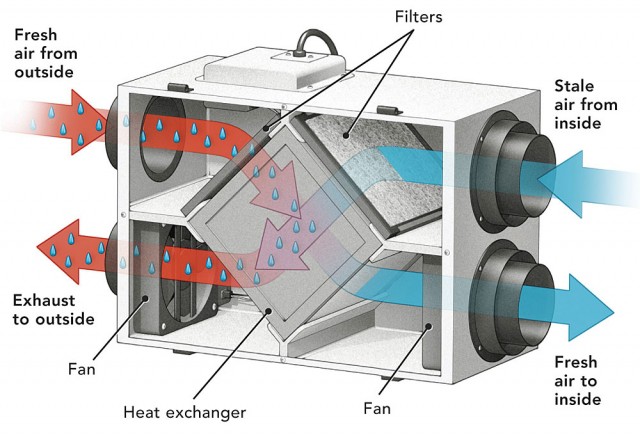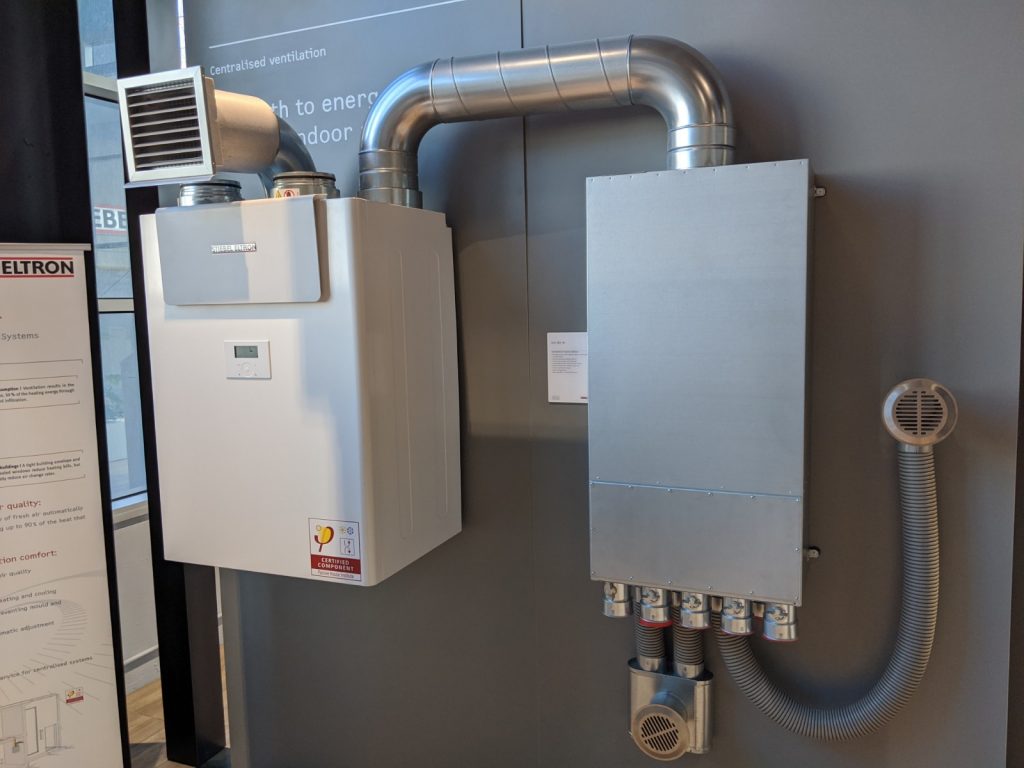The All-Inclusive Guide to the Uses of Heat Recovery Ventilation in Modern Buildings
Heat Recovery Ventilation (HRV) systems stand for a significant development in building modern technology (HRV Heat Recovery Ventilation). They offer a technique for trading stale interior air with fresh exterior air while reducing power loss. This technique not only boosts indoor air high quality but also adds to energy performance in both residential and industrial buildings. Recognizing the different applications and benefits of HRV can disclose its crucial role in modern design and sustainability initiatives. The ramifications of this technology are worth exploring further
Comprehending Heat Recovery Ventilation Systems

Several contemporary structures prioritize energy performance, comprehending warmth recuperation ventilation (HRV) systems is important for maximizing indoor air high quality and minimizing energy consumption. HRV systems function by transferring warmth from stagnant interior air to inbound fresh air, efficiently keeping comfy indoor temperature levels while decreasing power loss. These systems are composed of a warmth exchanger, followers, and ductwork that promote the blood circulation of air. During winter, HRV units capture and recycle warm from the outward bound air, while in summertime, they can help cool incoming air. By continually trading air, HRV systems also lower moisture and the focus of interior toxins. Correct installment and upkeep of HRV systems are necessary for their efficiency and efficiency in boosting overall structure performance and convenience.
Advantages of Heat Recovery Ventilation
Heat recovery ventilation systems use many benefits that boost both power effectiveness and interior air quality in modern buildings. By capturing and recycling energy from exhaust air, these systems significantly reduce heating & cooling expenses, resulting in lower energy intake. They preserve a consistent flow of fresh outdoor air, lessening the danger of interior air contaminants and irritants. This constant exchange assists control moisture degrees, avoiding mold and mildew development and making sure a healthier living atmosphere. Additionally, HRV systems add to sustainability objectives by decreasing total carbon impacts. Their capability to maximize air flow without sacrificing thermal comfort makes them a valuable addition to modern building style, promoting both economic and ecological benefits.
Applications of HRV in Residential Buildings
As house owners progressively focus on energy performance and indoor air quality, the applications of warmth recuperation air flow (HRV) systems in property structures have actually become much more prevalent. HRV systems are especially valuable in securely sealed homes, where maintaining fresh air circulation is necessary for stopping wetness accumulation and interior contaminants. They efficiently transfer warm from outward bound stale air to incoming fresh air, decreasing power prices connected with cooling and heating. Additionally, HRVs can boost convenience levels by managing humidity and temperature. They are additionally versatile for different property designs, consisting of single-family homes and multi-unit structures. Generally, incorporating HRV systems sustains lasting living practices while guaranteeing a much healthier indoor setting for residents.
HRV in Commercial and Industrial Setups
In business and industrial settings, the implementation of heat recuperation air flow (HRV) systems browse this site has actually ended up being increasingly critical for optimizing power performance and preserving air quality. These systems effectively transfer heat from exhaust air to inbound fresh air, decreasing the demand for additional heating or cooling. This not only reduces power costs yet likewise adds to sustainability initiatives. Industries such as manufacturing, warehousing, and office structures benefit considerably from HRV systems, as they help regulate temperature level and moisture degrees, ensuring a comfy and productive setting. In addition, HRV systems help in eliminating impurities and excess moisture, boosting indoor air quality. As policies around air high quality become more stringent, the fostering of HRV innovation is likely to grow, making it an essential part of modern-day business and commercial facilities.
Future Trends in Heat Recovery Ventilation Modern Technology

Frequently Asked Concerns
How Does Heat Recovery Ventilation Impact Indoor Air High Quality?
Heat recovery ventilation greatly enhances interior air high quality by constantly exchanging stale indoor air with fresh outside air while recovering power. discover here This process lowers toxins, keeps excellent moisture degrees, and guarantees a healthier environment for owners.
Can HRV Equipments Be Mounted in Existing Buildings?
HRV systems can without a doubt be set up in existing structures. Retrofitting might require adjustments to ductwork and ventilation designs, but it considerably improves energy performance and interior air quality, making it a viable option for older frameworks.
What Upkeep Is Needed for HRV Systems?

Exist Certain Climates Where HRV Is More Effective?
Heat recovery ventilation systems are specifically reliable in environments with substantial temperature distinctions between seasons. These systems maximize power performance by recouping warmth from exhaust air, making them optimal for both cold and moderately warm settings.
Exactly How Do HRV Equipments Affect Energy Bills?
